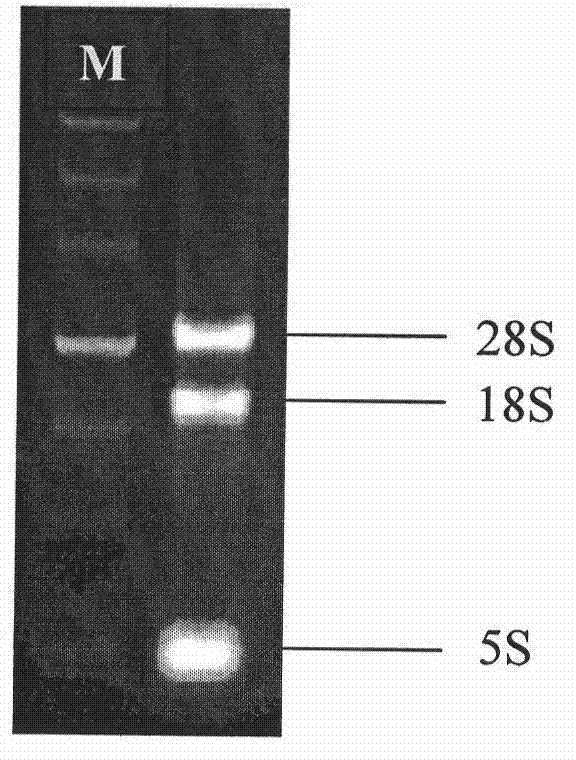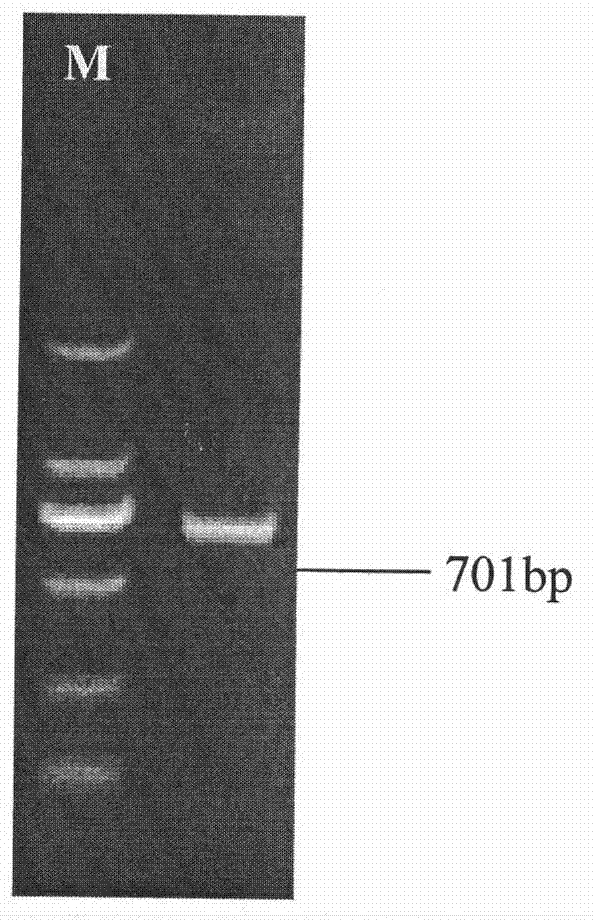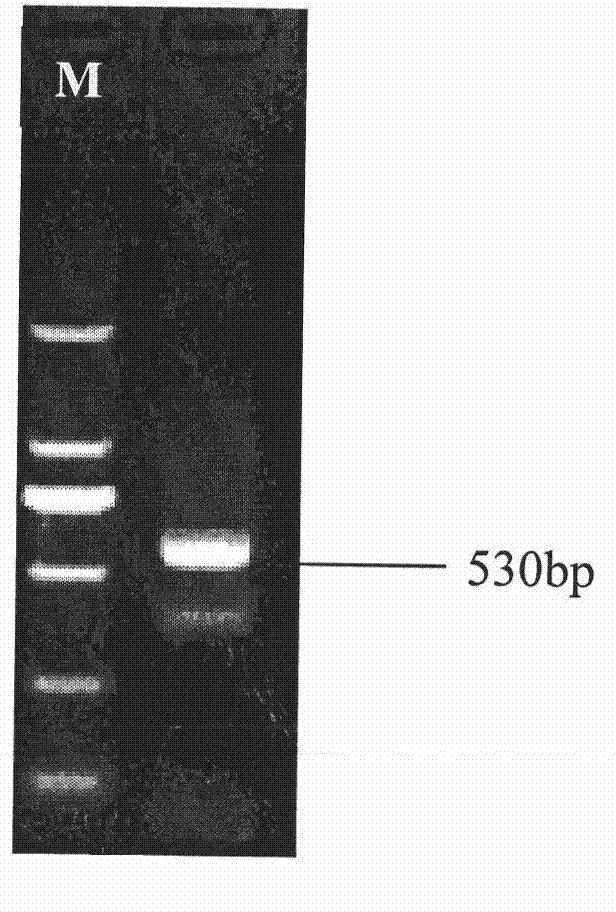Lilium spp. ANS (Anthocyanidin Synthase) gene and cloning method thereof
A lily and gene technology, applied in the field of lily ANS gene and its cloning, can solve the problem of less research on gene cloning and so on
- Summary
- Abstract
- Description
- Claims
- Application Information
AI Technical Summary
Problems solved by technology
Method used
Image
Examples
Embodiment Construction
[0028] The preferred embodiments of the present invention will be described in detail below in conjunction with the accompanying drawings; it should be understood that the preferred embodiments are only for illustrating the present invention, rather than limiting the protection scope of the present invention.
[0029] The fully colored oriental lily 'Justina' buds were used as experimental materials, which were quickly frozen in liquid nitrogen and stored in a -80°C ultra-low temperature freezer for later use.
[0030] 1. Total RNA Extraction
[0031] Using Plant RNAzol reagent, the specific method is as follows:
[0032] 1) Put the petals in a mortar, add liquid nitrogen and grind quickly. After grinding sufficiently, add RNAzol at a ratio of 100mg tissue / mL RNAzol and immediately transfer to a centrifuge tube.
[0033] 2) Stand at room temperature for 10 minutes to fully lyse the petals.
[0034] 3) Centrifuge at 4°C and 12,000 rpm for 5 minutes, and pipette the supernata...
PUM
 Login to View More
Login to View More Abstract
Description
Claims
Application Information
 Login to View More
Login to View More - R&D
- Intellectual Property
- Life Sciences
- Materials
- Tech Scout
- Unparalleled Data Quality
- Higher Quality Content
- 60% Fewer Hallucinations
Browse by: Latest US Patents, China's latest patents, Technical Efficacy Thesaurus, Application Domain, Technology Topic, Popular Technical Reports.
© 2025 PatSnap. All rights reserved.Legal|Privacy policy|Modern Slavery Act Transparency Statement|Sitemap|About US| Contact US: help@patsnap.com



